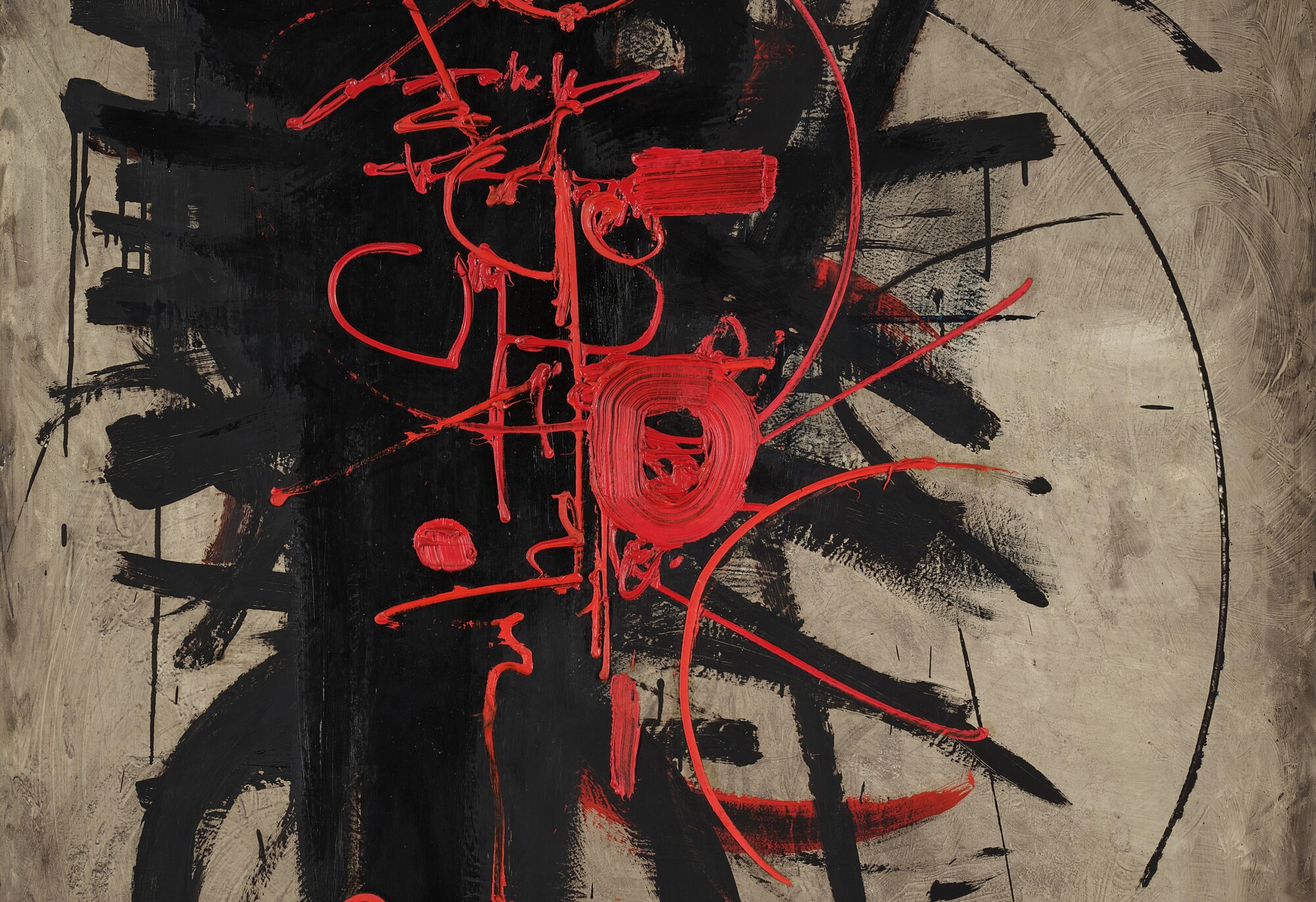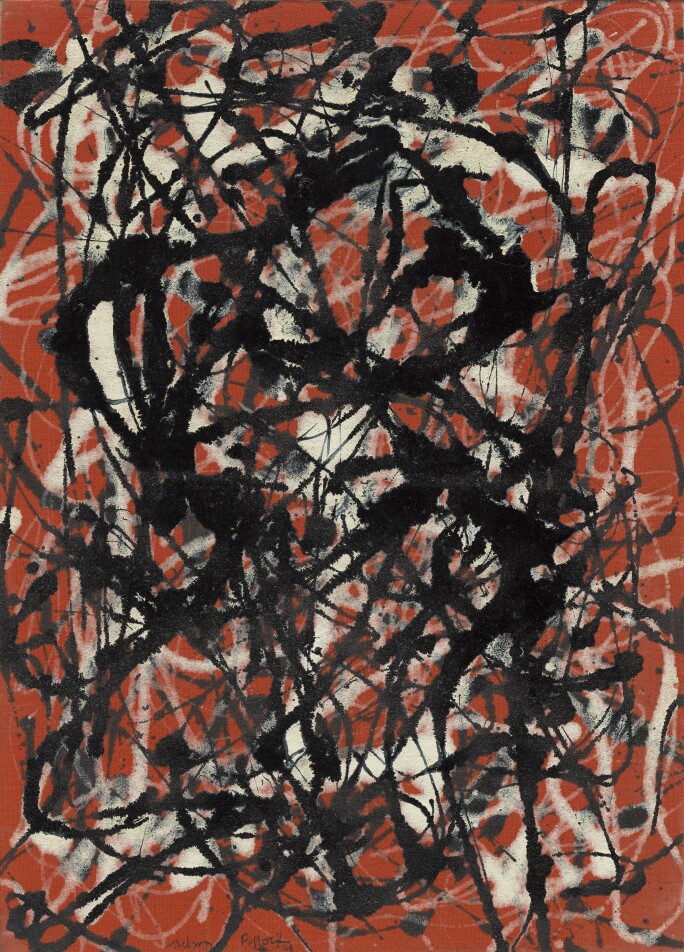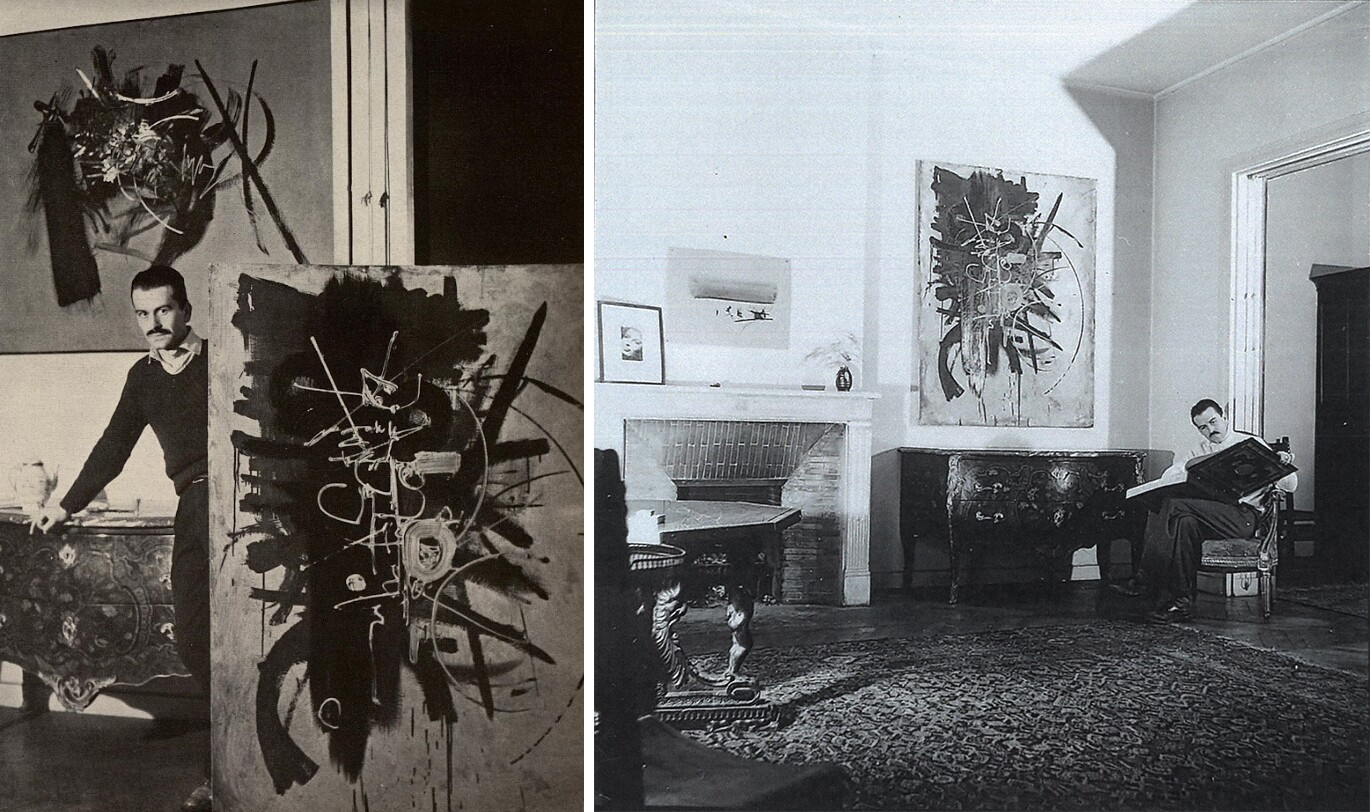“Georges Mathieu, who appears to feel a real companionship with the New York painters, is the latest addition to [Kootz] Gallery’s roster of avant-garde Frenchmen. Unlike the Americans, almost all concerned with engaging the entire surface, his images are thrown, like 3-D projections, more or less, in the middle of their canvases.”
An explosive riot of abstract form, Camp de Carthage evinces the rapid yet deliberate gestural primacy of Georges Mathieu, a triumphant pioneer of Lyrical Abstraction. Executed in 1951, during the same period that Mathieu began exploring Eastern aesthetics and philosophy, the present work is a seminal painting in the artist’s oeuvre that echoes the grand tradition of calligraphy in brilliant crimson and inky black. A testament to the significance of Camp de Carthage in Mathieu’s career, the present work was exhibited in the artist’s dual exhibition with Pierre Soulages, Mathieu / Soulages, held at the Arts Club of Chicago in 1954 as he gained esteem in the United States. In the present work, intersecting dashes, elliptical geometries, and faint linear traceries writhe together across the canvas with a visceral sense of immediacy, expressing the frenetic improvisation with which the French artist famously executed his paintings.


Camp de Carthage perfectly evinces the almighty gestural bravado of Mathieu, who pioneered a method of applying dripping paint directly from tube to canvas in order to keep pace with his lightning painterly fervor. Working with intense speed and risk guaranteed freedom in the act of painting for Mathieu, allowing him to develop a vigorous response to abstraction that liberated him from normative aesthetic conventions. As he explained, “Speed therefore signifies the definitive abandonment of the artisanal methods in painting in favor of methods of pure creation…Speed and improvisation are the reasons we are able to associate the creative forms of this painting with those of liberated and direct musical forms like Jazz or with Oriental calligraphy” (The artist quoted in "De l’abstrait au possible – Jalons pour une exégèse de l’art occidental," Éd. du Cercle d’Art Contemporain à Zurich, 1959). Camp de Carthage is a consummate and early example of Mathieu’s creative manifestos and methods: erupting in the searing red strokes before a pool of jet black, the present work sees the artist take inspiration from the gestural rhythm of Eastern calligraphy by imitating its line and velocity.

Right: The present work installed in Mathieu’s Paris studio, December 1953. Photo © Robert Descharnes. Art © 2022 Georges Mathieu / Artists Rights Society (ARS), New York. Courtesy of the Mathieu Archives
One year prior to the present painting’s execution, the Minister of Culture in France, André Malraux, had already esteemed Mathieu as a “Western calligrapher” at his seminal 1950 exhibition at the René Drouin Gallery, connecting him to the Eastern calligraphic tradition. The artist, however, did not actually travel to East Asia until 1957, when he famously visited Japan and influenced the Gutai movement with his impromptu painting demonstrations; if Mathieu adopted elements of Eastern aesthetics into his style, he had done so from afar. Working in Paris during the early 1950s, when he painted the present work, Mathieu had been simultaneously theorizing on his ideas of lyrical abstraction, leading him to study the execution and abstract spontaneity behind the calligraphic discipline.
Mathieu’s Important Paintings in Museum Collections
Entitled Camp de Carthage, the present example also nominally pays homage to Carthage, one of the most important trading hubs of the ancient Mediterranean in what is now Tunisia, attributing the Classical city with the majestic force that the abstract composition visually achieves. Executed in 1951, five years prior to Tunisia’s declaration of independence from France, this work thus belongs to a series of paintings Matthieu created throughout his career that he famously titled after noteworthy provinces or communes in France, including Vaires and Orly. An ode to the ancient Mediterranean power, with its swift uproar of pigment and line, Mathieu’s Camp de Carthage exemplifies a tour de force of Mathieu’s precipitous yet precise painterly output that distinguishes him as one of the most groundbreaking abstract artists. By radically privileging gesture over intent and form over content, Mathieu dedicated his work to the creative liberation of the artistic practice, a mission perfectly embodied in the searing eruption of blood red strokes of the present work.







